This week I watched Jennifer Daniel’s talk at Eyeo 2017. Daniel is a digital artist and editor, having had work published in many famous publications, such as The New York Times and Wired. At the time of her speech Daniel was working with a start up on the future of digital communication, specifically emojis, and is now the chair of the Unicode Consortium’s Emoji Subcommittee. Daniel’s work is in digital communication, specifically how humans communicate on digital platforms versus in person speaking or formal writing. Her presentation demonstrated a robust and nearly comprehensive understanding of digital communication, such as explaining the difference between emoji, gifs, and stickers or lightly chiding celebrities trying to capitalize on emojis but fail to understand how and why they are used. I think what Daniel is doing is very cool, her dedication to making communication as universal as possible and elevating emoji and other digital communication to the same consideration as traditional language is groundbreaking. I think in 20 years time her work will be remembered as a real positive for human communication.
Category: LookingOutwards-08
LO: The Creative Practice of an Individual
Gilberto Esparza is an artist based in Mexico, and his work explored the relationship between the built environment and the natural environment. Esparza mainly used electronics and robotics as his medium to express, making his work futuristic and engaging. Furthermore, I think his work achieved great depth in discussing our impact on the natural world. I especially admired Esparza’s Urban Parasites project and his Nomadic Plants project. What I found interesting across Esparza’s projects was the interaction between his robots and their surrounding environment. In the Urban Parasites project, Esparza made robot insects from industrial wastes, and he designed the robots to be autonomous. The robot insects convert the city’s light energy into the electricity that they require to function. In the Nomadic Plants project, Esparza’s robots acquired energy from contaminated waters in the city. What was most interesting about Esparza’s work is how he focused on how the robots would blend into the urban environment and people’s interaction with those robots. His projects inspired people living in urban communities to reflect on the consequences of urbanization and pollution. Finally, Esparza’s project lecture presented videos and photographs and introduced his process with sketches, which was engaging.
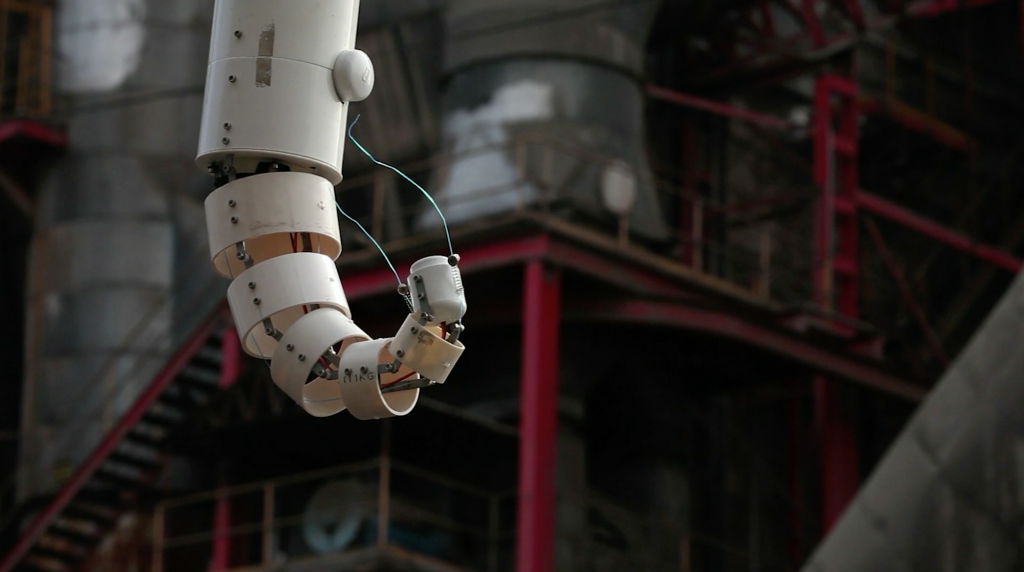
The Creative Practice of an Individual
For this week’s Looking Outwards writing assignment I chose to write about Lucianne Walkowicz. Lucianne was born in 1979 in NYC and she is an astronomer at the Adler Planetarium located in the city of Chicago. In the 2017-2018 Lucianne was given a Baruch S. Blumberg NASA/LOC Chair in Astrobiology! As an astronomer, she studies the ethics of Mars exploration, how stars influence a planet’s suitability as a host for alien life, stellar magnetic activity, and how to use advanced computing to discover unusual events in large astronomical data sets. Walkowicz holds a BS in Physics and Astronomy from Johns Hopkins University, an MS and PhD in Astronomy from the University of Washington, and held postdoctoral fellowships at UC Berkeley and Princeton prior to joining the Adler Planetarium. Lucianne is a very bright, warmhearted and open minded person. She described herself as privileged to study space – many would feel proud or even get cocky about the fact that they’re studying the aspects of space, yet she said she felt privileged because she understands that it is a dream of many but not everyone gets to do it.
I admire Lucianne and the work that she does. In the 2019 Eyeo Festival, Lucianne said that astronomers have to tell people what they owe to them. She is studying space not only because she is interested in it and because it fascinates her, she studies it so she could educate other people about it. In 2011, when Lucianne moved back to her hometown NYC, she along with other astronomers would hop on the train and ride from first to last stop holding signs that tell people to ask them any questions about space. She would spend her time and energy riding the train and giving people the opportunity to find out more about space. I respect her for what she does. Lucianne’s main goal was to not make people be interested in science but rather make them feel that they can access and do science themselves. She was all about equity and inclusion. The research showed that only around 37% of Discovery channel viewers are women so her goal was to make the idea of science be more broad and available for everyone. In 2018, Walkowicz co-founded The JustSpace Alliance, a nonprofit organization whose mission is to advocate for a more inclusive and ethical future in space, and to harness visions of tomorrow for a more just and equitable world today.
Lucianne presents her ideas through charts/graphs, pictures, videos and even art. She understands that many science related terms wouldn’t be too clear for many people so she uses visual representations to help people understand many different concepts. I really enjoyed her artistic project called “40 Orbits” which was performed as a dance in the air using electronic sound effects and LED lights. I felt as if I was watching a movement of a star in space – her aura and her movements made it seem like magic. Lucianne understands that many people are visually oriented so she created a meditation space where a person can sit and not only watch the stars and many constellations, but also listen to the stars move around! It is simply unimaginable. Lucianne made this project using her artistic abilities and a lot of technology to represent unearthly sounds of stars. I admire that project the most because it gives people the opportunity to focus on their spiritual aspects by listening to the stars. Many people don’t have the opportunity to even study space so Lucianne makes this experience available to everyone.
What I can learn about how to present my own work from Lucianne is the fact that I have to do the work not only for myself but also for others. My work can be educational and inspiring for others so I want to make my work accessible for everyone because the learning process shouldn’t be done alone. I want to use many visual representations as well in presenting my work to catch the attention and to make the ideas presented seem more easier and understandable.
https://www.tangledfields.com/about
LO 08: The Creative Practice of an Individual
In this video, McCarthy talks about how homes can be considered as smart humans through her various experimentations.
Lauren McCarthy, as known as the creator of p5.js, is an artist based in Los Angeles exploring how, in today’s society, subjects of surveillance, automation, and network culture influence our social relations. McCarthy claims that human beings are encouraged to interact with algorithms everyday, further critiquing the tensions between social and technological systems, as well as intimacy and privacy. In particular, I found her style of generating art very phenomenal, especially in her work “LAUREN”, with her attempt to perform as a human version of smart home intelligence Amazon Alexa, and later remotely monitoring over the people in their residences to explore the ambiguous relationship between human and machine. In her works, McCarthy employs many of today’s networked electronic smart devices, such as televisions, computers, faucets, and cameras, in which conveys strange, uncanny feelings by intentionally showing the perspective of a camera with artificial intelligence, when a person is being “watched” 24/7 even at home. Home is where everyone should feel the most comfort, safe, and secure; yet, McCarthy contradicts this claim by presenting us with discomfort and unease. I absolutely admire how she looks at our everyday commonplaceness into such intriguing mismatch relationship we experience using today’s technology.
Reference: https://lauren-mccarthy.com/ & https://lauren-mccarthy.com/LAUREN
Looking Outwards 08: The Creative Practice of an Individual
Eyeo 2019 – Mike Tucker from Eyeo Festival on Vimeo.
The speaker that I chose for this week’s LO is Mike Tucker. I watched the talk he gave “NEW DOORS OF PERCEPTION: EXPLORATIONS INTO MIXED REALITY” at Eyeo 2019. Mike Tucker is an Interactive Director, Designer & Developer, currently based in New York. He studied Graphic Design at Virginia Commonwealth University. For the last 5 years, Mike has been working at Magic Leap, a company focused on developing the future of Spatial Computing. His work mainly involves interactive arts and music, and his hope is to “encourage the next wave of spatial designers to question our expectations of media, and the opportunity we all have in designing a mixed reality future.”
At Eyeo, he talked about how he started his journey from graphic design to web design and then to VR and interactive art. His most recent work is Tónandi (means “tone spirit” in Icelandic), which is an interactive audio-visual experience where participants are within a virtual environment with a unique soundscape. The soundscape adapts to the current environment and changes based on the participant’s eyes, hands, and movement.

I really love this project because I think it really breaks the expectations of how a medium should be experienced. The way that sound is represented visually and the ability for people to touch and interact with “sound” is so incredible. It’s also very admirable because Mike talks about how they started from prototypes and experimented with different elements before developing the final product. It’s quite amazing to see his early explorations worked towards his current works. Furthermore, he broke down the different aspects of how they created perception and illusion, which includes head tracking, controllers, spatial sound, touch, eye gaze, and environment.
Mike presented his work by documenting the stages of development. He used a combination of images and videos to show his past projects and also various explorations. He also showed other creators’ projects that served as inspiration. It’s very interesting to see how the technology improved over the years. I can definitely learn from him by doing a better job of documenting my work process.
LO-The Creative Practice of an Individual
The project speech I choose to listen to is NEW DOORS OF PERCEPTION: EXPLORATIONS INTO MIXED REALITY by Mike Tucker in 2019. Mike Tucker, a special effects expert, is an Interactive Director at Magic Leap, a company focused on creating the future of Spatial Computing. His work explores the space of interactive arts and music. In his speech, he talks about his journey with hand and eye tracking, optics, and spacial controllers involved in his process of developing Tónandi, an interactive, spatial music experience. Basically, Tonandi is a spacial computing interaction system which people could actually manipulate by hand to create varying soundwaves and visual effects. The reason why Tucker wanted to create something like it is that there was a bottleneck fo senses, and he wanted to break down people’s expectations on how visual and audio information were perceived by human beings. I am really impressed by the precision of their equipment’s in tracking human eye and body movements. Usually, our eyes capture things, and our Brian perceived that information in a speed faster than we thought it did. However, their top-notch depth sensor and designed systems to scan the surroundings constantly are able to construct rules in behaviors in an environment. This practice showcases how we could break traditional way of seeing the world and improve our view of the world. Also, it marks the new step of interactive and immersive combination of reality and visional information. Most importantly, I really like the way he narrates the whole project. It’s like developing the project with him from the start, one step by anther. The whole process makes me feel engaged.
Looking Outwards: The Creative Practice of an Individual
Today I took a look at Lucianne Walkowicz’s talk during the 2017 Eyeo Festival. She presented her work on astrobiology at the Adler Planetarium in Chicago. Her work explores the ethics of Mars Exploration, magnetic activity, and how stars influence a planet’s suitability as a host for alien life, and specifically how to use advanced computing to discover unusual events in large astronomical data sets. Walkowicz does talks and blogs with large organizations on the topic of Mars colonization and the ethics surrounding the topic. She explores topics like Decolonizing Mars, how police will solve murders on Mars, and the digital dark age! Walkowicz uses methods like interactive and dynamic graphics as well as gestures to keep the audience’s retention. Her work is displayed in an easy and intuitive way to help me stay on track and anticipate what she’s going to say next.
The Creative Practice of an Individual: Mike Tucker
https://mike-tucker.com/15/tanapura/
Mike Tucker has had quite the route to the work he has been doing for the past 5 years(from 2017). Most recently, he worked at Flash until it died due to Facebook and then to Magic Leap. He considers himself to be an Interactive Director, Designer & Develop. His most recent work has been Tonandi, Tana Pura, and PolyFauna. He works on spatial computing projects creating an augmented reality that turns sound into visual tech that you can touch and intact with the changed visuals, and therefore create your sound. People have described this as feeling a sort of synesthesia. Specifically his work with the Tonandi project at Magic Leap doing spatial sound and combining instillation withflexinility, making soundscapes. One thing that Tucker went on in his lecture to talk about was the importance of the environment in these augmented reality experiences. This struck home for me as someone who just did an AR reality project in my environmental design class. It was very easy for me to imagine the future of this project and how it could be used to re-image museum space. I admire his work on Tana Pura creating sound into a visual in real space. I think in the future there will be a real market for this especially for work for clients who want to integrate technology in spaces.

Tucker’s way of presenting reminded me a lot of listening to a Ted talk. I like how he explains his work first, but at the end also talks about ways and platforms that you can get into work like his and how this technology is being implemented now, and where the future most likely lies in it.
LO 08:
Eyeo 2019 – Refik Anadol from Eyeo Festival on Vimeo.
Refik Anadol is a director and media artist, who works with site-specific public art that uses a parametric data sculpture approach, and live audio and visual performances that use immersive installations. He was born in Istanbul, Turkey, and currently lives and works in LA, California.
He describes himself as being intrigued by how the transformation of subjects in contemporary culture requires rethinking how we perceive space from an aesthetic, technical, and dynamic viewpoint. He also explores embedding media arts into architecture and encourages viewers to visualize alternative realities by presenting the possibility of redefining the functionality of architectural spaces. Anadol suggests that all spaces and facade have the potential to be a canvas for a media artist.
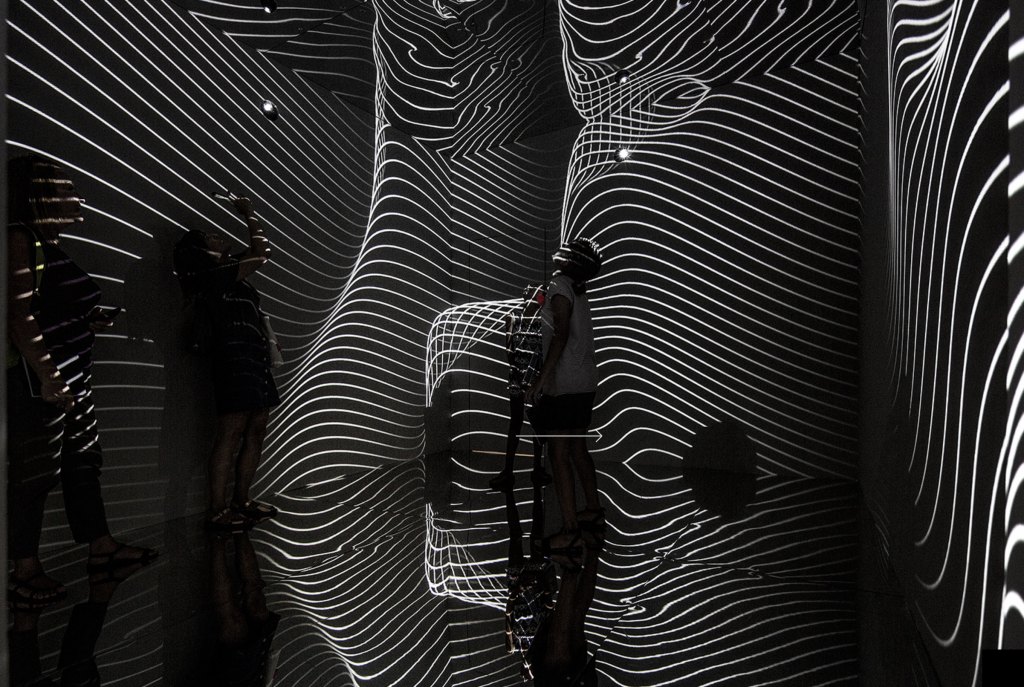
His body of work includes a lot of immersive indoor art installations and outdoor/public art installations, most of which use visual media based upon algorithms and data. I admire how he views the facades and spaces of architecture as potential for media artwork. Public art has a lot of potential to change a community for the better, while also exposing children in lower income communities to possibilities like art.
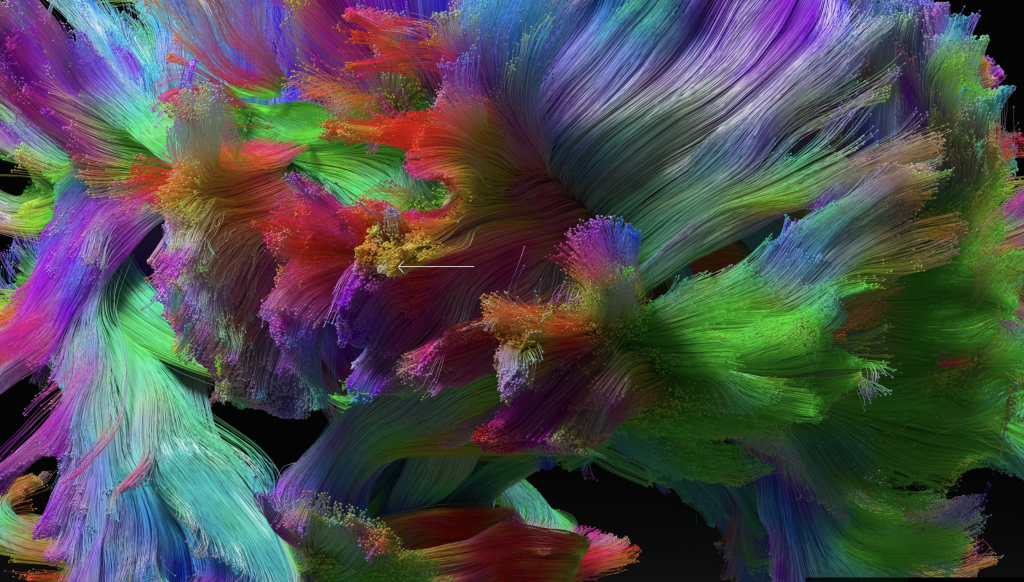
I liked that he explained his own journey in terms of unique mentors and experiences that had helped him along the way. It helps explain how he got to where he is, while also exposing the audiences to many other helpful resources. Presentation wise, he utilized humor, quotes, and compliments (to his mentors) in such a way that his presentation was very dynamic.
Project 07: Composition with Curves
function setup() {
createCanvas(400, 400);
background(220);
}
function draw() {
background(0);
//moves epicycloid to center
translate(width / 2, height / 2);
epicycloid();
}
function epicycloid() {
// https://mathworld.wolfram.com/EpicycloidInvolute.html
var x;
var y;
var a = map(mouseX, 0, width, 300, 80);
var b = map(mouseY, 0, height, 100, 10);
strokeWeight(2); //line weight
stroke(10, mouseX, mouseY); // color of epicycloid
noFill();
//epicycloid
beginShape();
for (var i = 0; i <= 500; i ++) {
var theta = map(i, 0, 500, 0, TWO_PI);
x = (a + b) * cos(theta) - b * cos((a + b / b) * theta);
y = (a + b) * cos(theta) - b * sin((a + b / b) * theta);
vertex(x, y);
}
endShape();
}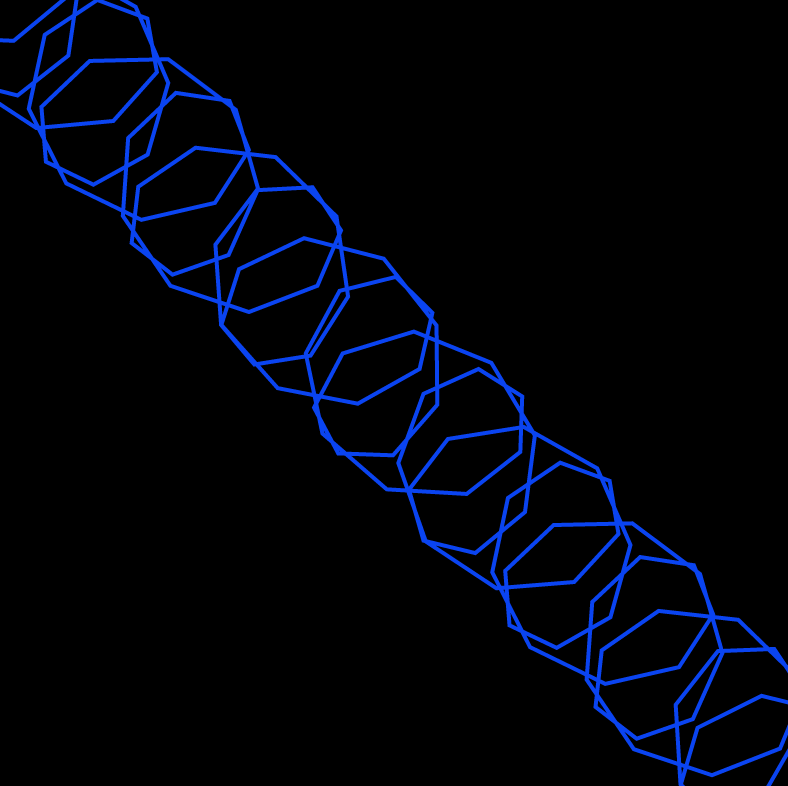
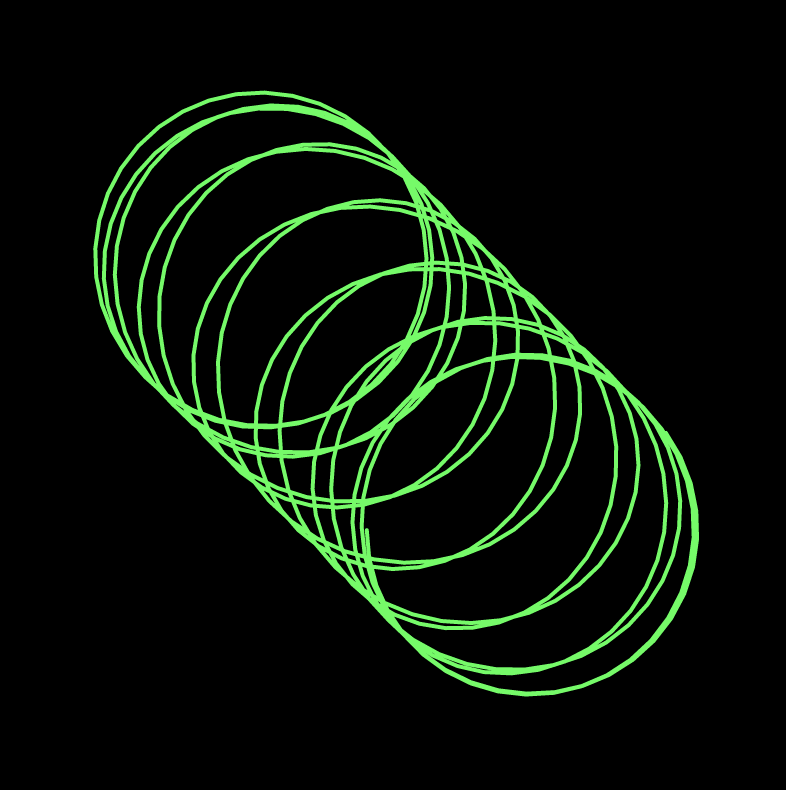
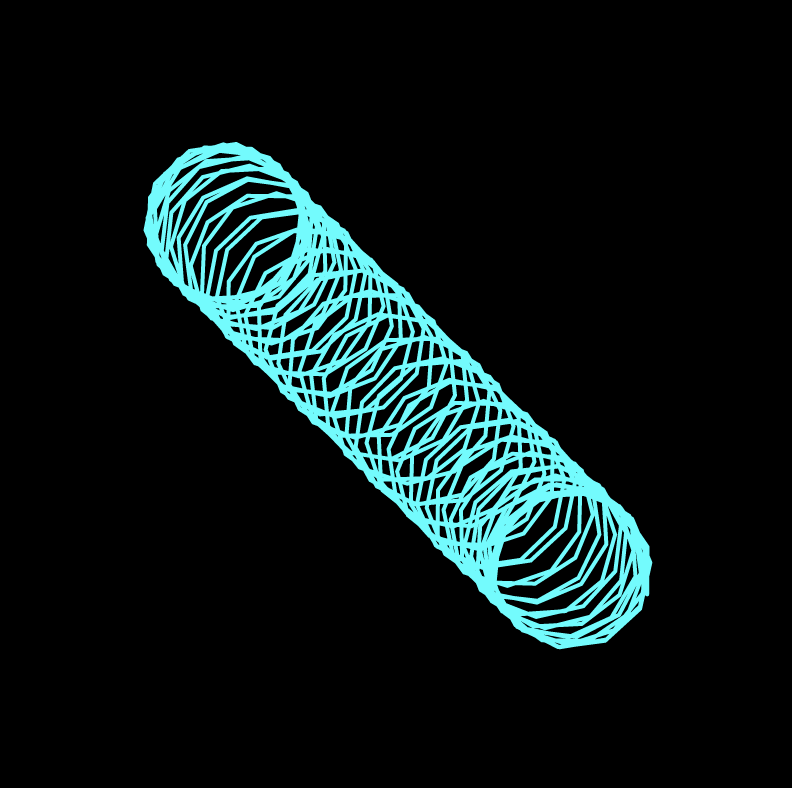
I think that the hardest part of this project was trying to find a curve on the website that was in parametric form. Figuring out how to make that formula more dynamic in this composition was also difficult. The curve that I ended up choosing was an epicycloid. In the way that I wrote the code, I like how it can be very simple with just a few circles but as the user moves the mouse, it create more interesting shapes which is really fun.
![[OLD SEMESTER] 15-104 • Introduction to Computing for Creative Practice](../../../../wp-content/uploads/2023/09/stop-banner.png)